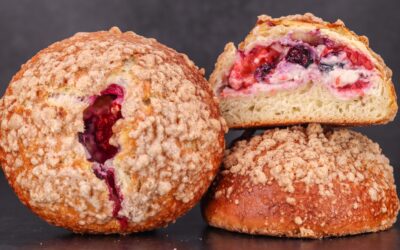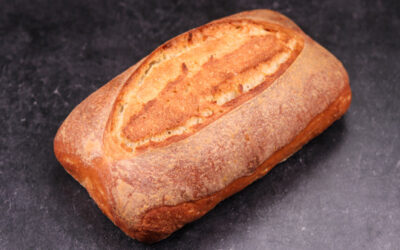This cold fermented no-knead multi grain seeded pullman loaf is the culmination of some of the previous Principles of Baking videos. If you have been following the channel for a while you know how much I love cold bulk fermentation. And recently I showed that kneading bread dough may be overrated. Because a hearty whole wheat loaf goes well with seeds, I decided to throw in a soaker. But because hearty whole wheat loaves can be dense, I thought a scald or yudane would be a great addition too.
The result is an extremely tasty sandwich bread which is not that hard to make. It has a bouncy texture, moist crumb, and it will stay soft for a good few days.
The barley malt syrup gives the bread a wonderful depth of flavour and a slight sweetness. The butter makes the crumb soft and supple, and it will make it stay soft for longer. The rye flour brings an additional complexity to the overall taste of this bread.
You can swap the rye flour for more whole wheat if you want. You can swap the malt syrup for other sweet syrups of leave it out altogether. You can swap the butter for oil or leave the fat out too. The seeds can be swapped for any other seeds that you like.
Prepare the dough in the evening and finish it the next day.
This loaf fits perfectly in a 2lb (900g) or 9in x 4in (23cm x 10cm) bread tin. You can find the USA Pan Pullman tin I used in my Amazon storefront if you’re interested.
Watch the video down below for detailed instructions.
Ingredients
For the scald –
25g (0.9oz) butter
25g (0.9oz) barley malt syrup
120g (4.25oz) seeds
60g (2.1oz) wholegrain rye flour
500g (1.1lb) boiling water
For the dough –
300g (10.6oz) whole wheat bread flour
120g (4.25oz) white bread flour
4g (0.14oz) instant dry yeast or 4.8g (0.17oz) active dry yeast or 12g (0.42oz) fresh yeast
9g salt
The flour I use has a protein content of 13%. If your flour is weaker, then you may need to lower the hydration.
Method
- Make the soaker. In a large bowl combine the syrup, butter, seeds, and rye flour. Pour in the boiling water and whisk everything well.
- Leave to cool down. I left it on the table for 2 hours and finished chilling in the fridge for 1 hour. The scald can be prepared one day ahead of time and left on the table.
- Make the dough. Add the salt, yeast, and white flour to the scald. Mix well.
- Add the whole wheat flour and mix to a dough. *Desired dough temperature 24C – 25C (75F – 77F). To learn more about dough temperature control click here.
- Chill the dough for 30 minutes.
- Fold #1.
- Chill for 30 minutes.
- Fold #2.
- Chill for 30 minutes.
- Fold #3.
- Cold ferment the dough for 12 hours.
- The next day lightly pre-shape and leave to rest for 30 minutes.
- Final shape. Place the shaped loaf in a greased loaf tin.
- Cover and final proof for 2.5 hours. *During the final hour of fermentation preheat the oven to 180C (356F) fan on.
- Bake the loaf with the lid on for 35 minutes.
- Remove the lid, gently take out the loaf and place it back in the oven on its side for another 10 minutes. If your tin does not have a lid, then you should still follow the same steps. Finishing the loaf without the tin makes the crust crisp up nicely and it ensures that the loaf will keep its shape as it cools down.
- As soon as the bread comes out the oven place it on a rack and leave to cool down completely.
Keep in mind that the conditions in each kitchen and in each fridge are different, so fermentation times may vary for you. It is up to the baker to control the bread and react accordingly.
Your oven may be different too, so your baking time may vary.
Watch the video here



